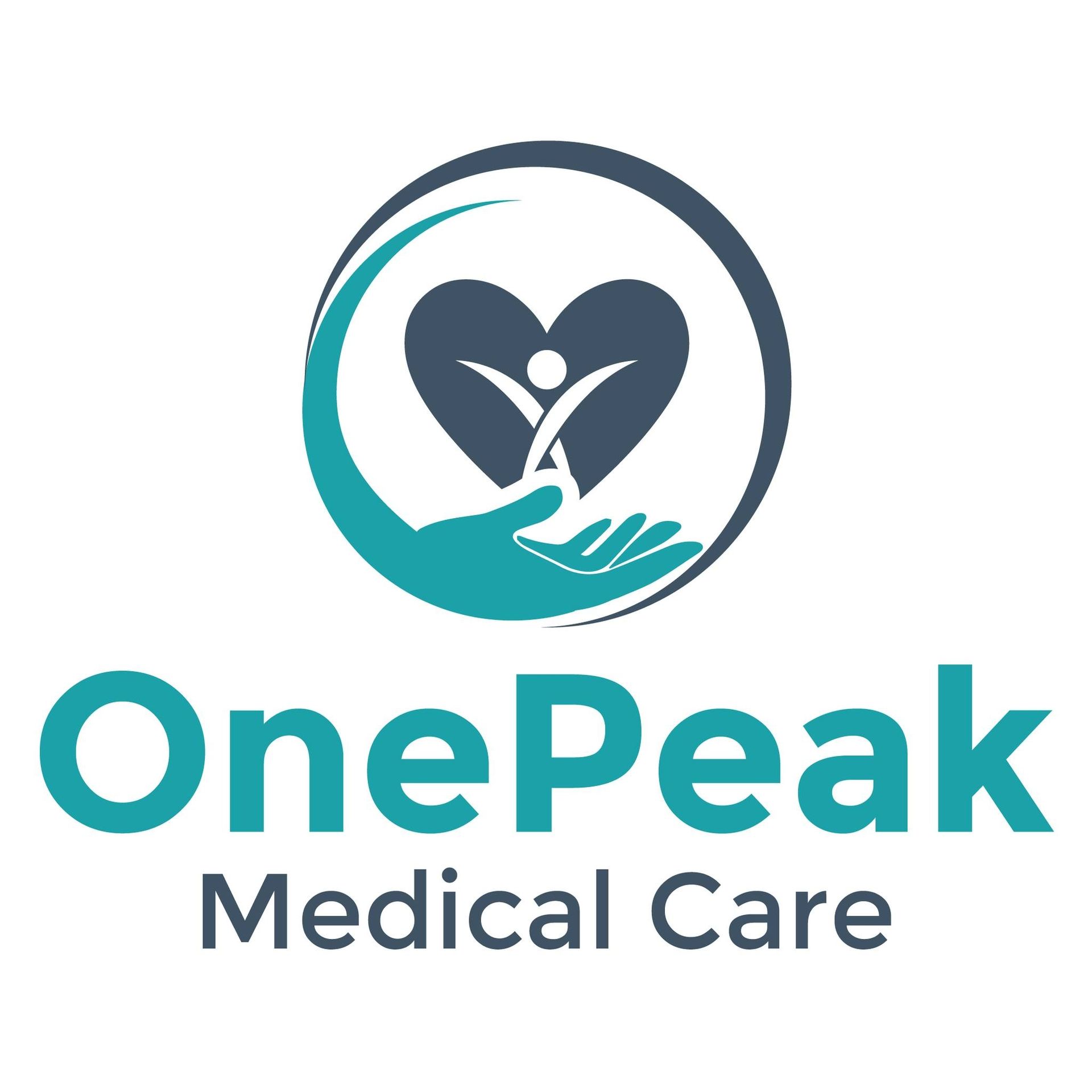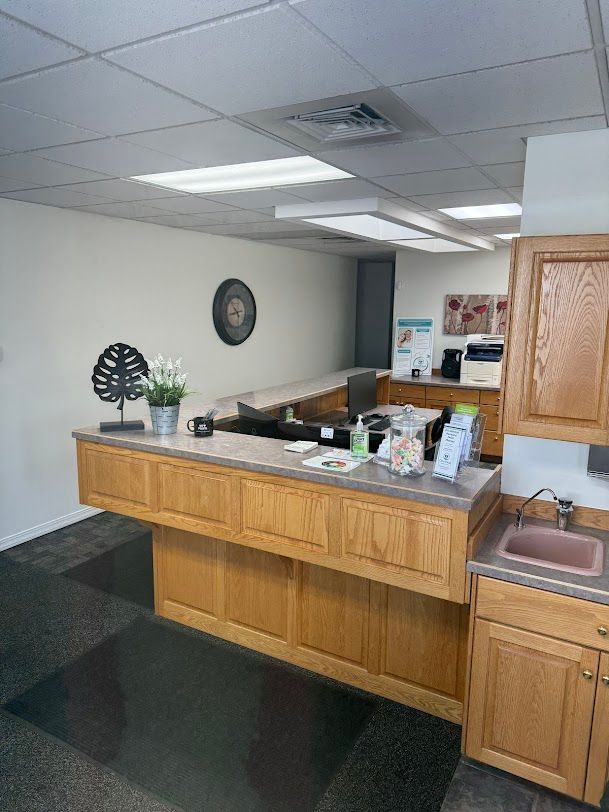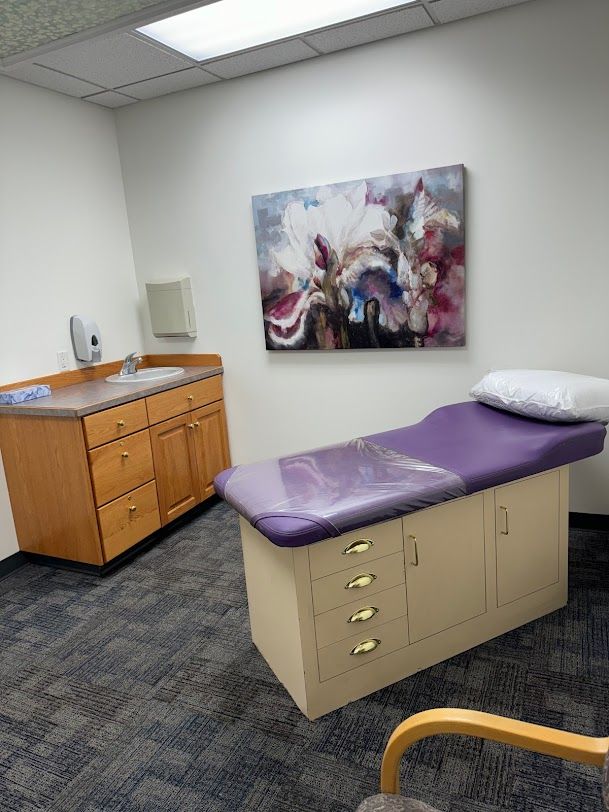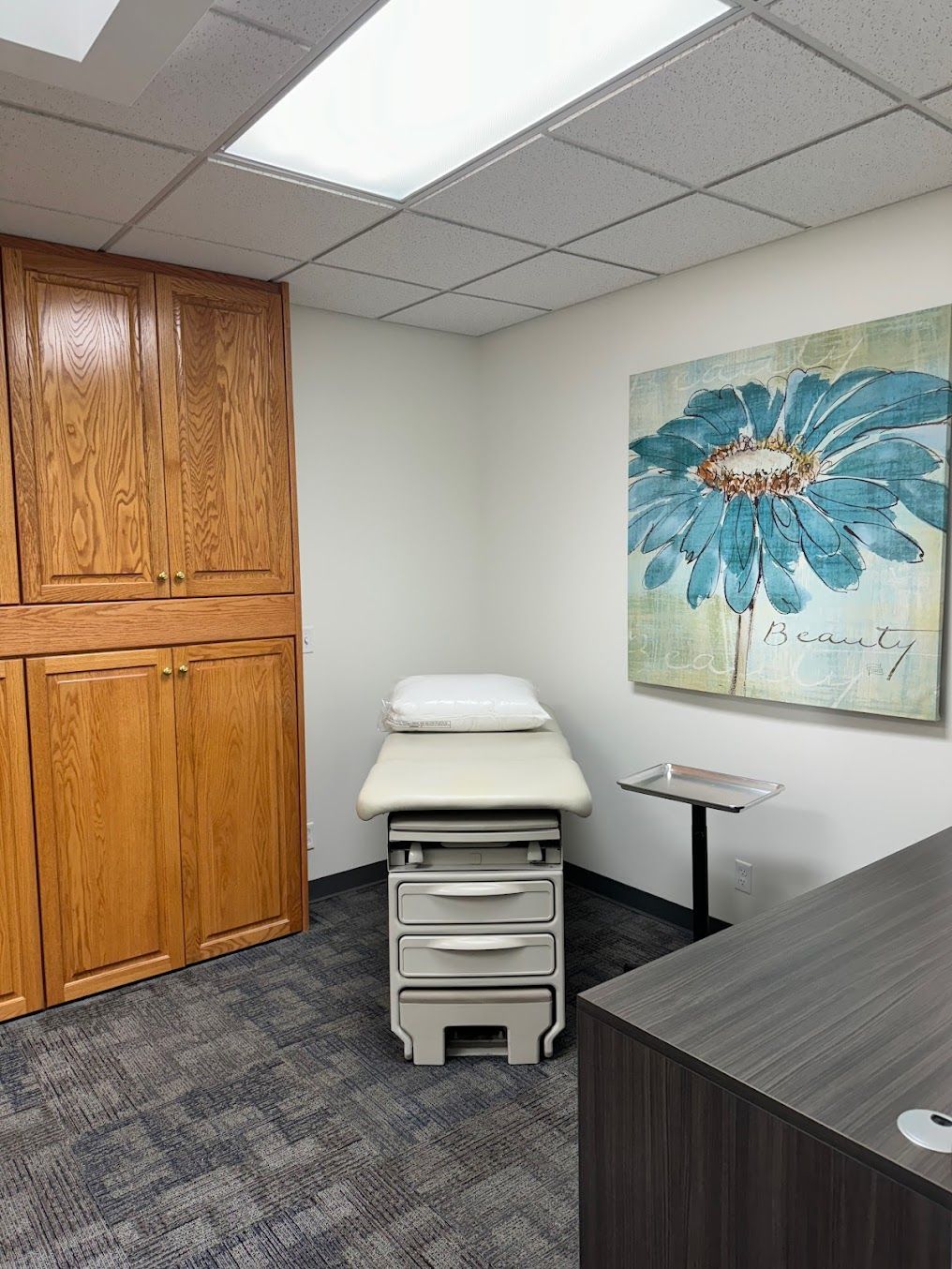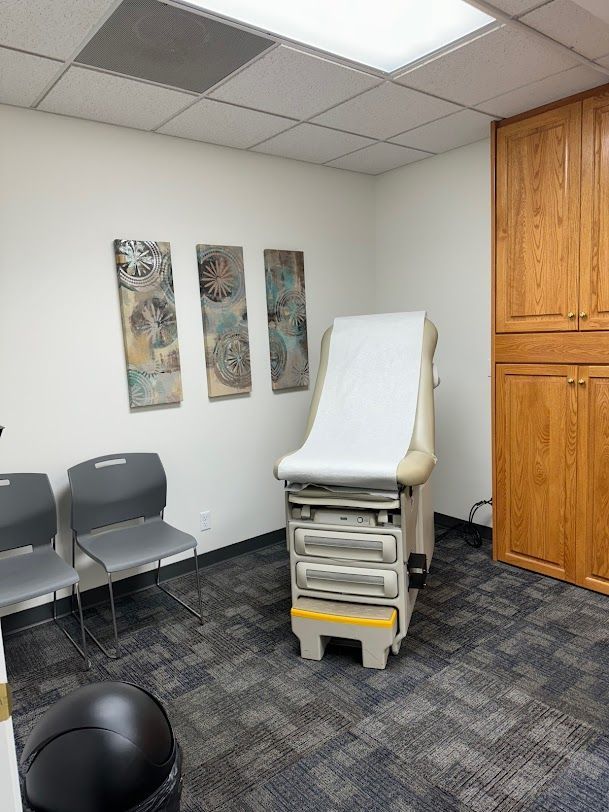Choose the Hormone Therapy that's Right for You
We offer several options for your hormone therapy treatment. We can provide:
Bio-Identical Hormone Pellet Therapy for both men and women that last for months.
Bio-Identical Hormone Therapy Creams.
Hormone therapy Injections such as Testostrone and Estrodiol.
Call 208-331-6700 to schedule an appointment.
Ease the Side Effects of Menopause
Come to our clinic for bio-identical hormone therapy injection treatments in Boise, ID
Are you suffering from the symptoms of menopause? If you're dealing with hot flashes, trouble sleeping or a low sex drive, One Peak Medical Care has a solution. We offer hormone therapy treatments at our office in Boise, ID. When you schedule an appointment, we'll complete comprehensive lab work to determine your needs. From hormone therapy injections, creams, or pellets, between the provider and the patient will find the best option for you to live your optimal best.
Contact our clinic today to learn more about how we can help.
Men
Hormone Therapy
If you answer yes to one question, you may benefit from Replacement Hormone Therapy:
- Do you feel less enthusiastic about life than you once did?
- Has your libido deteriorated?
- Do you have trouble achieving or maintaining an erection?
- Are you often irritable?
- Do you lack sufficient energy to complete daily tasks?
- Have you put on weight, especially around your midsection?
- Do your muscles ache?
- Have you lost muscle?
-
Potential Benefits of Testosterone Therapy:
- Improved libido
- Improved sexual performance
- Improved sexual function
- Reduced body fat
- Reduced risk of cardiovascular disease
- Improved bone density
- Improved memory
- Improved strength
- Improved ability to add lean muscle mass
- Improved mood
- Increased energy
-
Testosterone Treatment Options:
- Testosterone Cream
- Testosterone Pellets (implant)
- Testosterone Gel
- Testosterone Injection
- Testosterone Cypionate
- Testosterone Propionate
- Testosterone Enanthate
Evaluation for Hormone Pellet Therapy
You will have patient visits billable to insurance. This will involve a full symptom discussion and evaluation, in our facility, and a panel of laboratories for baseline hormone levels plus other indicated labs. Hormone Pellets may be inserted during the second visit after a discussion of your labs and symptoms.
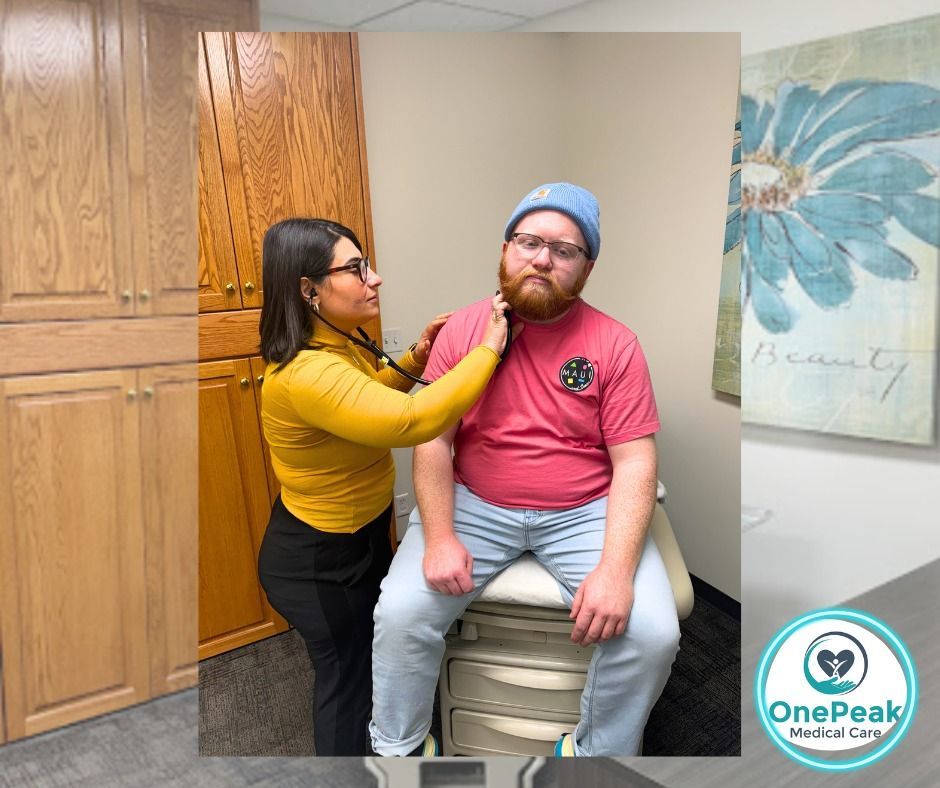
Fee for Hormone Pellet Therapy for Men
Health insurance will cover the cost of office visits and laboratory tests for evaluation of hormone-related symptoms. However, insurance will not cover compounded bioidentical hormone pellets or the pellet insertion procedure.
The fee for male hormone pellet therapy (including the procedure and the pellets themselves) is $600.00. New pellets are needed (typically every 4 to 6 months). When one considers the amount that may be saved on medications for sleep, depression, anxiety, elevated cholesterol, diabetes, and osteoporosis, plus benefits to quality of life, relationships, and job performance, the cost of pellet therapy is well worth it.
Click to learn about Bioidentical Hormone Pellet Therapy for MEN.
Women
Hormone Therapy
One Peak Medical Care Practitioners have long been committed to helping women restore and maintain vitality and well-being through natural and safe hormonal solutions. Being proactive by supplementing hormones in the early stages of hormonal decline is key to maintaining health and vigor as we age [1,17]. Our providers choose to prescribe bioidentical hormones, meaning they have the same molecular structure as the body's natural hormones. Bioidentical hormones are available in a variety of formulations, including hormone patches, topical creams, lozenges, vaginal inserts, or pills.
Another choice for the delivery of hormones is the subcutaneous hormone pellet, the subject of the present article. For a thorough education on female hormone therapy in general, please see the informative article Perimenopause and Hormone Health, which explains the menopausal transition and addresses common concerns about the use of hormone therapy.
What is Bioidentical Hormone Pellet Therapy?
Once the decision is made to use hormone therapy, there comes another decision: Which method is the best fit for you? For some women, hormone pellet therapy will be considered a superior method of hormone delivery. With this unique system, 2-3 small pellets consisting of testosterone or estradiol, each about the size of a grain of rice, are inserted beneath the skin, into the fatty tissue of the hip, and the pure hormone is delivered gradually, directly into the bloodstream.
The simple in-office procedure takes only a few minutes, first with numbing of the skin, and one tiny incision that only requires a small steri strip, no stitches. The subcutaneous pellets act as a reservoir of hormones, allowing the body to receive a consistent dose throughout the day and night.
The pellets gradually absorb until they are completely dissolved, leaving no residue. Typically, a woman will find that pellets will control symptoms for 3-5 months. Because of the efficient and gradual delivery system of the hormone pellets, side effects are less likely than with oral or injectable hormones, and there is less incidence of issues related to poor absorption, sometimes problematic with hormone creams, gels, or patches.
Bioidentical hormone pellets are FDA-monitored, but not approved in the United States. Hormone pellet therapy has been used in both men and women for decades in Europe and Australia, and this has allowed for the generation of ample scientific data regarding the benefits and safety of this method. Hormone pellet therapy is being used more and more in the US, as women seek a more convenient and natural way to receive their hormone therapy.
What Hormones Can Be Administered With Female Hormone Pellet Technology?
Testosterone Pellet Therapy
Testosterone is a vital hormone in women, eliciting physiologic effects through androgen receptors in almost all female body tissues, including breast, heart, blood vessels, intestines, lungs, brain, spinal cord, nerves, bladder, uterus, ovaries, endocrine glands, vaginal tissue, skin, bone, joints, and fatty tissue. Men produce higher circulating levels of testosterone than women; however, testosterone is the most abundant active sex hormone in a woman throughout her lifespan [2]. Testosterone has been considered a "male hormone", thus largely ignored as an essential hormone in female physiology.
This has been unfortunate since attention has not been given to diminished quality of life and potential health consequences when women begin to experience symptoms related to testosterone decline in mid-life. In a woman's body, production of testosterone peaks in her mid-20s and begins to steadily decline, down to about 50% by age 40. This is when a woman will often present with complaints such as increased abdominal fat, hair loss, fatigue, brain fog, loss of sex drive, reduced orgasm, anxiety, irritability, depression, headaches, and general lack of well-being. Most women attribute these symptoms to a natural diminishment of vitality with aging.
But, recognizing these symptoms is signaling something about our bodies, and paying attention to hormone health can improve our health and quality of life as we age. Testosterone replacement therapy for symptomatic women has the potential to improve mood, libido, orgasm, energy level, and feeling of well-being. In addition, documented health benefits include reduced cardiac risk, reduced breast cancer risk, and improved bone density. Testosterone therapy can be beneficial for symptomatic individuals as early as a decade or more before the onset of the menopause transition [5,6,7,8,9,14].
It is important to note that in both men and women, testosterone can be converted within the body's tissues to estradiol, some of which is not measurable, as the conversion takes place within cells where it immediately binds with its receptor. Interestingly, it has been demonstrated that breast cancer survivors using testosterone pellet therapy, combined with medication that blocks the conversion of testosterone to estradiol, reported relief of menopausal symptoms with testosterone therapy alone [14].
Thus, for some women, testosterone pellet therapy will be all that is required to control symptoms. For others, the addition of estradiol and progesterone will be of benefit. Each woman will be individually evaluated, and appropriate options considered.
Estradiol Pellet Therapy
Estradiol is the estrogen hormone that makes a woman look female and governs much of reproductive function. This hormone also plays a role in countless bodily functions, as evidenced by estradiol receptors found in the heart, brain, bones, joints, skin, eyes, teeth, gums, nerves, blood vessels, urinary tract, reproductive organs, and more. So, with estradiol depletion, a woman suffers the loss in countless ways, with deterioration of physical, mental, and emotional health that accompanies hormonal decline. Typically, a woman's estradiol level starts to decline in her 40s and is almost undetectable by her early 50s.
Estradiol replacement therapy relieves symptoms such as hot flashes, night sweats, insomnia, brain fog, moodiness, depression, vaginal dryness, painful intercourse, low libido, dry skin, and headaches. Health benefits from non-oral estradiol supplementation include reduced risk of cardiac disease and stroke, dementia, diabetes, and loss of bone density leading to osteoporosis [4,5,6,9,10,11,12].
What are the Risks and Side Effects of Hormone Pellet Therapy for Women?
Testosterone is a vital hormone in women, eliciting physiologic effects through androgen receptors in almost all female body tissues, including breast, heart, blood vessels, intestines, lungs, brain, spinal cord, nerves, bladder, uterus, ovaries, endocrine glands, vaginal tissue, skin, bone, joints, and fatty tissue. Men produce higher circulating levels of testosterone than women; however, testosterone is the most abundant active sex hormone in a woman throughout her lifespan [2]. Testosterone has been considered a "male hormone", thus largely ignored as an essential hormone in female physiology.
This has been unfortunate since attention has not been given to diminished quality of life and potential health consequences when women begin to experience symptoms related to testosterone decline in mid-life. In a woman's body, production of testosterone peaks in her mid-20s and begins to steadily decline, down to about 50% by age 40. This is when a woman will often present with complaints such as increased abdominal fat, hair loss, fatigue, brain fog, loss of sex drive, reduced orgasm, anxiety, irritability, depression, headaches, and general lack of well-being. Most women attribute these symptoms to a natural diminishment of vitality with aging.
But, recognizing these symptoms is signaling something about our bodies, and paying attention to hormone health can improve our health and quality of life as we age. Testosterone replacement therapy for symptomatic women has the potential to improve mood, libido, orgasm, energy level, and feeling of well-being. In addition, documented health benefits include reduced cardiac risk, reduced breast cancer risk, and improved bone density. Testosterone therapy can be beneficial for symptomatic individuals as early as a decade or more before the onset of the menopause transition [5,6,7,8,9,14].
It is important to note that in both men and women, testosterone can be converted within the body's tissues to estradiol, some of which is not measurable, as the conversion takes place within cells where it immediately binds with its receptor. Interestingly, it has been demonstrated that breast cancer survivors using testosterone pellet therapy, combined with medication that blocks the conversion of testosterone to estradiol, reported relief of menopausal symptoms with testosterone therapy alone [14].
Thus, for some women, testosterone pellet therapy will be all that is required to control symptoms. For others, the addition of estradiol and progesterone will be of benefit. Each woman will be individually evaluated, and appropriate options considered.
Evaluation for Hormone Pellet Therapy
You will have patient visits billable to insurance. This will involve a full symptom discussion and evaluation, in our facility, and a panel of laboratories for baseline hormone levels plus other indicated labs. Hormone Pellets may be inserted during the second visit after a discussion of your labs and symptoms.
Fee for Hormone Pellet Therapy for Women
Health insurance will cover the cost of office visits and laboratory tests for evaluation of hormone-related symptoms. However, insurance will not cover compounded bioidentical hormone pellets or the pellet insertion procedure.
The fee for female hormone pellet therapy (including the procedure and the pellets themselves) is $350.00. The cost works out to approximately $2.75 per day, depending on how often new pellets are needed (typically every 3 to 5 months). When one considers the amount that may be saved on medications for sleep, depression, anxiety, elevated cholesterol, diabetes, and osteoporosis, plus benefits to quality of life, relationships, and job performance, the cost of pellet therapy is well worth it.
References Related to Testosterone, Estrogen, and Pellet Implant Therapy
- Turner R, Kerber IJ. A theory of eu-estrogenemia: a unifying concept. Menopause, Vol. 24, No. 9, pp. 1086-1097. "Estrogen action through Estrogen Receptors is critical for homeostasis in women and men. Considering there are more than 3,600 ubiquitously distributed Estrogen Receptors and signaling pathways, it is biologically naive to conclude that estrogen, with its complex genomic and nongenomic actions, should be deficient in a menopausal woman's body."
- Glaser R, Dimitrakakis C. Testosterone Therapy in Women: Myths and Misconceptions. Maturitas, 2013 Mar;74(3):230-4. Abstract: "Although testosterone therapy is being increasingly prescribed for men, there remain many questions and concerns about testosterone (T) and in particular, T therapy in women. A literature search was performed to elucidate the origin of, and scientific basis behind many of the concerns and assumptions about T and T therapy in women. This paper refutes 10 common myths and misconceptions, and provides evidence to support what is physiologically plausible and scientifically evident: T is the most abundant biologically active female hormone, T is essential for physical and mental health in women, T is not masculinizing, T does not cause hoarseness, T increases scalp hair growth, T is cardiac protective, parenteral [non-oral] T does not adversely affect the liver or increase clotting factors, T is mood stabilizing and does not increase aggression, T is breast protective, and the safety of T therapy in women is under research and being established. Abandoning myths, misconceptions and unfounded concerns about T and T therapy in women will enable physicians to provide evidence-based recommendations and appropriate therapy."
- Bianchi VE. The Anti-Inflammatory Effects of Testosterone. The Journal of the Endocrine Society, 2018 Oct 22;3(1):91-107. "Low Testosterone level has implications for metabolic health in both males and females and should be considered a risk factor because of its correlation with metabolic syndrome and all-cause mortality."
- Samantha Worboys, et al. Evidence That Parenteral [pellet implant] Testosterone Therapy May Improve Vasodilation in Postmenopausal Women Already Receiving Estrogen, The Journal of Clinical Endocrinology & Metabolism, Volume 86, Issue 1, Jan 2001, 158-161. "This study provides evidence that testosterone implant therapy may improve [mechanisms of] arterial vasodilation in postmenopausal women already using HRT. This supports the concept that androgens have important physiological actions in women as well as in men, and provides additional safety data pertaining to postmenopausal testosterone use."
- Britto R, Araújo L, Barbosa I, Silva L. Improvement of the lipid profile in postmenopausal women who use estradiol and testosterone implants. Gynecological Endocrinology, 2012; 28(10):767-769. "The use of E and T implants showed a statistically significant decrease in Total Cholesterol at the beginning of the Hormone Therapy and some decrease in LDL in the group using Hormone Therapy. In the group without HT, there was no difference in lipid profile."
- Iellamo F, et al. Testosterone Therapy in Women With Chronic Heart Failure: A Pilot Double-Blind, Randomized, Placebo-Contolled Study. Journal of the American College of Cardiology, Volume 56, Issue 16, Oct 2010, 1310-1316. "Testosterone supplementation improves functional capacity, insulin resistance, and muscle strength in women with advanced Chronic Heart Failure. Testosterone seems to be an effective and safe therapy for elderly women with Chronic Heart Failure."
- Glaser RL, Dimitrakakis C. Reduced breast cancer incidence in women treated with subcutaneous testosterone, or testosterone with anastrozole; a prospective, observational study. Maturitas, 2013; 76(4):342-9. "Testosterone and/or Testosterone+Anastrazole delivered subcutaneously as a pellet implant, reduced the incidence of breast cancer in pre and postmenopausal women"
- Glaser R, Dimitrakakis C, Trimble N, Martin V. Testosterone pellet implants and migraine headaches: a pilot study. Maturitas, 71 (2012) 385-388. "Continuous testosterone was an effective therapy in reducing the severity of migraine headaches in both pre-and post-menopausal women."
- Savvas M, Studd JW, et al. Increase in bone mass after one year of percutaneous estradiol and testosterone implants in postmenopausal women who have previously received oral estrogens. Br J Obstet Gynaecol. 1992 Sep:99(9):757-60. "Subcutaneous estradiol and testosterone implants will result in an increase in bone mass even after many years of oral estrogen replacement therapy."
- Mikkola T, Tuomikoski P, et al. Estradiol-based postmenopausal hormone therapy and risk of cardiovascular and all-cause mortality. Menopause, Sept 2015, Vol 22, Issue 9, 976-83. "In absolute terms, the risk reductions mean 19 fewer coronary heart disease deaths and 7 fewer stroke deaths per 1,000 women using any Hormone Therapy for at least 10 years."
Disclaimer
*The content on this website is for informational purposes only. The purpose of this website is to serve as a source of information when evaluating different treatment options. It is not intended to substitute for a qualified medical consultation with your healthcare provider. Never avoid speaking to your physician or disregard his advice because of something you’ve read on this website. **Results are not typical; actual results may vary. Always seek the advice of your qualified healthcare provider before making any changes to your healthcare regime. NOTICE: The information contained on this page is general information and is not intended to take the place of your personal physician’s advice, or to diagnose, treat, cure, or prevent any disease. The notes contained herein are not a substitute for medical advice or treatment for specific medical conditions and should not be used as such. Only a qualified physician can determine if you qualify for and should undertake treatment.
All Rights Reserved | One Peak Medical Care

